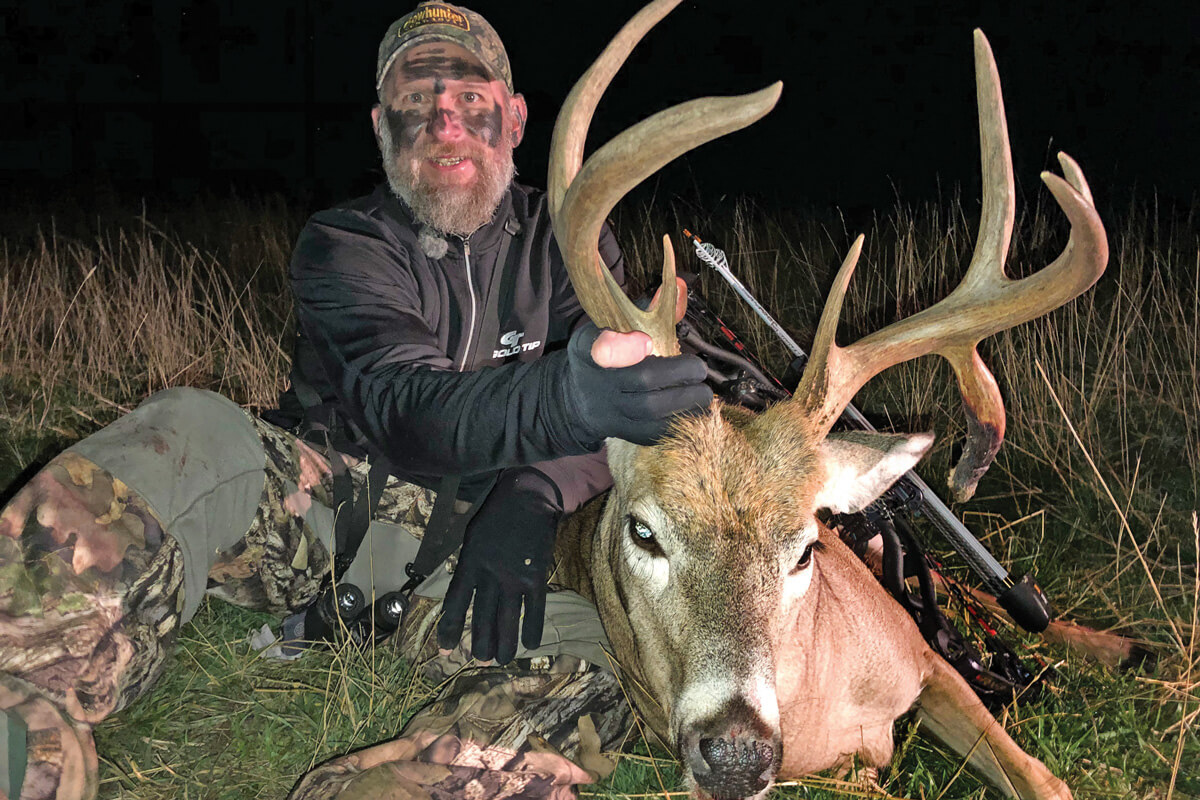
Assistant Editor Brian Fortenbaugh took this nice droptine buck. Age is a big factor in droptines. The buck was aged at 6.5 years.
Question: I read Dr. Dave Samuel’s explanation of why “Slingshot,” the buck in Curt Wells’ October 2022 article had an extra antler sticking out of his forehead. Could Dave explain how droptines and double main beams occur in whitetails? Craig S., via e-mail
Answer: There is no question that older bucks tend to develop droptines more readily than young bucks, and usually genetics is involved. The genes for droptines (and sticker points and extra points) tend to be expressed when bucks get older. The fact that we don’t see many bucks with droptines in the wild is because we kill lots of younger bucks before they can manifest their full potential. Some biologists believe that almost half of all bucks have some genes for nontypical points that would become visible if the bucks lived long enough. Proving this would be difficult, but it sure appears to be true.
Another factor that complicates the impact of genetics on droptines is the doe. Her genes most certainly play a role here, and some have suggested that her role is even more important than that of the buck. Again, that would be hard to prove, but deer-game farmers keep track of all their breeders — bucks and does. And they can and do breed for big, older nontypical bucks because such bucks bring in more money.
The cause for double main beams is something totally different, because genetics is not involved. Almost certainly, a double main beam is caused by an injury to the pedicle. Let me review what Curt wrote in his article in our October issue. The pedicle is the bony projection of the frontal bone where the antler develops. It has a special cell layer on it where the new antler grows. Research has shown that if you take some of those special cells and move them, a new antler tine often develops. In fact, years ago a researcher in Canada grafted some of these cells on the leg bone of a deer, and an antler tine grew there. In the case of “Slingshot,” those cells moved to the center of the frontal bone — yielding a “unicorn” buck.
But for double antlers, the cells move just as a new antler is starting to grow. At that time, if the buck bumps that area of his head, he may displace some of those cells right beside the base of the pedicle. When that happens, a second antler may start to grow there. If you look at photos of bucks with a double main beam, that second antler’s base is right beside or against the pedicle. When these special cells end up at the base of the pedicle, you may not get a second antler. There are times when the pedicle is bumped just as the antler starts to grow, in which case you just get a jumble of smaller tines around the base of the original antler. But on rare occasions, you’ll get a whole new antler.
Such bucks are not genetically inferior; they just have an extra antler. It will shed when the normal antlers shed. And it will most likely grow there the next year because the specialized cells that form the spot where the antler grows are still there.
The trauma to the pedicle, just as the antler starts to grow, can be caused by most anything. The buck may just bump his head on a tree limb or by sparring with another buck. Growing antlers are subject to damage that affects the resulting antler, and double main beams is one such outcome.








































